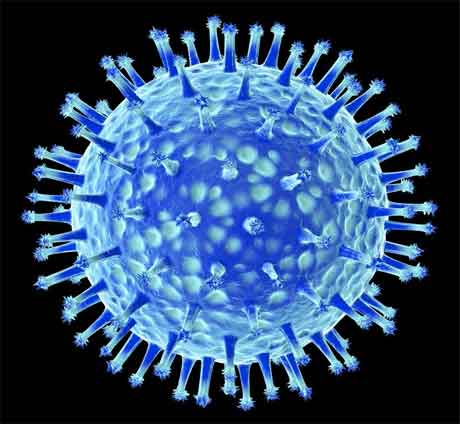The first report of probable person to person transmission of the new avian influenza A (H7N9) virus in Eastern China has been published, detailing how the virus is suspected to have been passed from a father to his daughter.
 The findings, published today in BMJ, provide the strongest evidence yet of H7N9 transmission between humans, but the authors stress that its ability to transmit itself is “limited and non-sustainable.”
The findings, published today in BMJ, provide the strongest evidence yet of H7N9 transmission between humans, but the authors stress that its ability to transmit itself is “limited and non-sustainable.”
Chinese doctors and health officials detail how a 60 year-old Chinese man who contracted the disease at poultry market likely passed the virus on to his healthy 32 year old daughter. Both died of multiple organ failure related to the virus.
Two almost genetically identical virus strains were isolated from each patient, suggesting transmission from father to daughter.
The researchers acknowledge some study limitations, but say that the most likely explanation for this family cluster of two cases with H7N9 infection is that the virus “transmitted directly from the index patient to his daughter.” But they stress that “the virus has not gained the ability to transmit itself sustained from person to person efficiently.”
In an accompanying editorial James Rudge and Richard Coker from the London School of Hygiene and Tropical Medicine note that transmission between humans “is not surprising, and does not necessarily indicate that the virus is on course to develop sustained transmission among humans.”
Nevertheless, they point to several traits of H7N9 are of particular concern, and conclude that, while this study might not suggest that H7N9 is any closer to delivering the next pandemic, “it does provide a timely reminder of the need to remain extremely vigilant: the threat posed by H7N9 has by no means passed.”
Our colleagues at the UK SMC collected the following expert commentary. Feel free to use these quotes in your reporting.
Dr John McCauley, Director, WHO Collaborating Centre for Reference and Research on Influenza, & Division of Virology, MRC National Institute for Medical Research, said:
“I do not think that the results from the BMJ are surprising. I also think that both the manuscript and the editorial reach the reasonable conclusion that H7N9 transmission was possible and therefore should be carefully monitored.”
Dr Peter Horby, Senior Clinical Research Fellow, Oxford University Clinical Research Unit in Hanoi, Vietnam, said:
“Qi et al report two cases of virologically confirmed severe avian influenza A/H7N9 virus infection in a father and daughter. The most likely source of infection for the daughter was her father, during the period that she cared from him whilst he was ill.
“Limited person to person transmission of non-human influenza virus infections has been reported for the avian influenza viruses H5N1 and H7N7, and the swine origin influenza virus H3N2v. None of these viruses have yet acquired the ability for sustained person to person transmission. Highly pathogenic H5N1 viruses with a limited ability for person to person transmission have been around for more than a decade, yet have not progressed any further down the path towards a pandemic virus. Limited human-to-human transmission of H7N9 virus is therefore not surprising, and, like H5N1, H7N7, and H3N2v, does not necessarily represent the early stages of a trajectory towards full adaptation to humans.
“The finding of person-to-person transmission of H7N9 does however raise the level of concern about H7N9 viruses and reinforces the importance of intensive surveillance and molecular studies to understand what it is that constrains the ability of these viruses to infect, replicate and be transmitted from humans. The fact that the transmission of H7N9 from person to person occurred following prolonged close contact with a severely ill patient, suggests that the infecting dose may play a role; with a large infecting dose and/or repeated exposure able to overcome a low inherent capacity to transmit between humans. It is also notable that the transmission occurred between blood relatives. There is some evidence that susceptibility to highly pathogenic avian infleunza H5N1 virus infection and severe pandemic H1N1 influenza may have a host genetic component [Horby 2012; Everitt 2012]. The role of host genetics in susceptibility to H7N9 therefore requires further exploration.”
Prof Wendy Barclay, Chair in Influenza Virology, Imperial College London, said:
“The editorial accompanying this paper on human transmission is spot on – there was no genetic change in the virus and it is not surprising that under close contact some transmission is seen.”